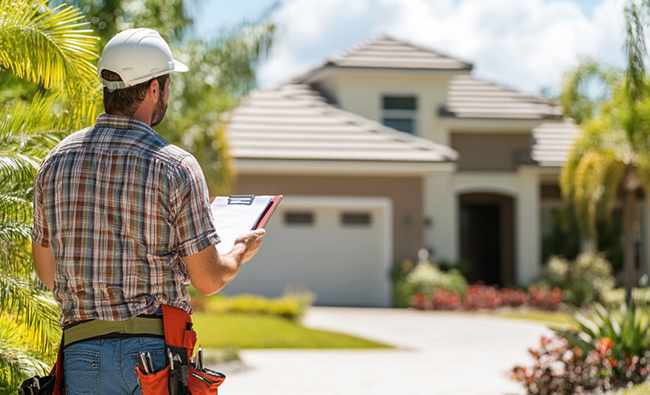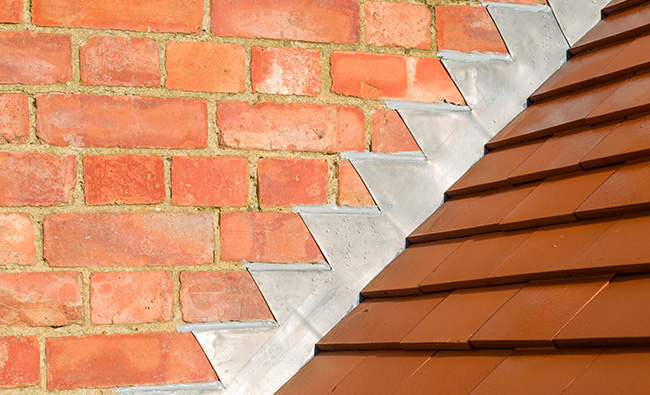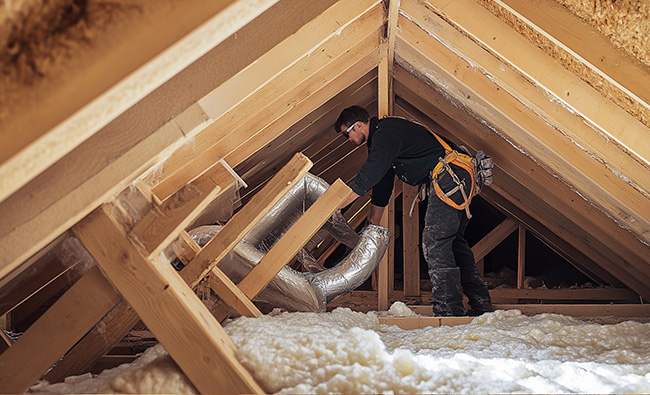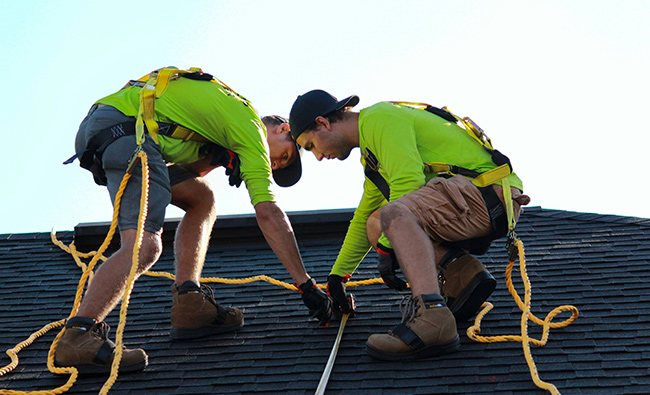Need a roof maintenance checklist? The roof maintenance tips paired with this guide cover all the essential tasks, from inspections to cleaning gutters, to help you maintain a durable and safe roof that reaches its full life expectancy.

Key Takeaways
- Regular roof inspections and maintenance are essential to prevent costly repairs and extend the roof’s lifespan, including checking flashing and drainage systems.
- Cleaning gutters, trimming nearby trees, and removing moss and algae are critical tasks that help maintain effective water drainage and protect roofing materials from damage.
- Engaging professional roofing contractors ensures compliance with building codes, provides expert inspections, and helps maintain the overall health and longevity of your roof.
Schedule Regular Roof Inspections
Routine inspections are essential for effective roof maintenance. Conducting them twice a year can significantly extend your roof’s lifespan by identifying minor issues early. Look for cracks, tears, and blisters, which, if ignored, can cause severe structural damage.
Engage professional roofing contractors for these inspections. Their trained eyes can spot issues that might be missed during a casual visual inspection. Professional inspections help identify potential leaks, damaged shingles, and other structural issues early, saving you from costly repairs in the future.
Address minor flaws promptly to prevent further damage. Staying proactive with inspections maintains the integrity of your roofing system and keeps your house safe.
Clean Gutters and Downspouts

Clean gutters and downspouts are crucial for proper water drainage. Clogged gutters can’t function effectively, leading to water infiltration and potential damage. Regular cleaning prevents moisture buildup, which can lead to moss growth and shingle degradation.
Gutters should be cleared regularly by removing leaves, twigs, and other debris. Ensure downspouts are securely attached and free of blockages to prevent water pooling. Installing kick-out flashing can further enhance gutter functionality by directing water flow effectively.
Neglecting this task can lead to severe issues, such as water damage to your home’s siding and foundation, and structural damage to the roof. Ensure your gutters are working correctly by regularly cleaning them.
Trim Nearby Trees
While nearby trees add beauty, their tree branches can become a menace if left unchecked. Overhanging branches can drop debris that traps moisture on the roof. Regularly trim these branches to prevent damage to the roof shingles.
Falling limbs can cause severe structural damage. Trimming branches that shade the roof can reduce moss growth by improving sunlight exposure, maintaining both the roof’s aesthetic appeal and longevity.
Schedule tree pruning and trimming sessions regularly, especially in the spring when trees are actively growing. Use the right tools, like a ladder and pruning shears, to safely remove overhanging branches and keep your roof clear of debris and potential hazards.
Inspect and Repair Flashing

Flashing maintains a watertight seal where roof planes intersect, such as around chimneys, vents, and skylights. Regularly inspecting and repairing flashings prevents water leaks and ensures the integrity of your roofing system. Look for rust, gaps, or deterioration during inspections.
After storms, inspect the flashing for any damage. Use the right sealants to maintain the watertight seal and check caulking for cracks. Ensuring roof penetrations are sealed properly prevents leaks and extends the life of your roof.
Maintaining flashing can save you from costly repairs and help maintain your roof’s overall health. Make flashing inspection a regular part of your roof maintenance routine.
Remove Moss and Algae
Moss and algae may give your roof a rustic charm, but are harmful. Moss growing on shingles retains moisture, leading to deterioration and reduced roof lifespan. Moss growth can also obstruct proper drainage, resulting in potential water damage and leaks.
To combat moss, remove any organic matter and debris buildup on the roof. Use a gentle, eco-friendly dish soap and horticultural oil solution to remove moss safely. Consider installing zinc or copper strips to inhibit moss and algae growth for long-term prevention.
Keeping your roof free of moss and algae enhances its appearance, ensures proper water drainage, and extends its lifespan. Regular maintenance and proactive measures are key to a healthy, moss-free roof.
Check Attic Ventilation
Proper attic ventilation is crucial for maintaining a healthy roof and preventing mold, mildew, and ice dams. Adequate ventilation pathways allow humid air to escape, replacing it with cool, dry air, which helps mitigate the risks of mold and mildew by preventing moisture buildup.
Check that vents are unobstructed and functioning correctly. Installing rafter vents can improve attic airflow, ensuring insulation and stored items do not block ventilation. Address any ventilation problems promptly to prevent moisture buildup from improperly vented appliances.

Proper attic ventilation supports overall roof health and energy efficiency, making it a critical component of roof maintenance.
Examine Roof Surface for Damage
Regularly examine your roof surface for signs of damage to detect issues early and prevent costly repairs. Look for blistering, cracking, tears, holes, abrasions, and loose or damaged pieces. Different types of roofs require different focus areas, such as checking tile and shingle roofs for loose or missing pieces and inspecting metal roofs for corrosion and damaged panels.
Use binoculars to inspect hard-to-reach vulnerable areas from the ground, or physically assess the roofing membrane for punctures and tears. Perform inspections after severe weather or high winds to catch any damage early. Address identified damage promptly to avoid costly repairs.
Staying vigilant and conducting regular inspections maintains the integrity of your roof and prevents minor potential issues from becoming major problems. Use a checklist to ensure nothing is overlooked during these roofing maintenance inspections.
Assess Drainage Systems
Effective drainage systems prevent water damage to your roof and home. Blocked drainage systems can lead to costly repairs. During heavy rainfall, unmaintained gutters can cause water to overflow, potentially damaging siding and foundation.
Regular inspections should include checking all roof drainage components for blockages. Verify that downspouts are securely attached and free of debris to ensure proper water drainage. Address damaged or improperly installed scuppers promptly to maintain effective water drainage.
Maintaining clean and effective drainage systems prevents water infiltration and protects your roof from potential leak damage.
Document Maintenance and Repairs
Keeping detailed records of all roof maintenance and repairs is crucial for future inspections and budget planning. A maintenance log helps track the history of roof work, allowing homeowners to plan for upcoming maintenance and budget appropriately. Note down any observed issues during inspections to ensure they are addressed promptly.
A systematic approach to documenting a maintenance checklist improves communication between homeowners and roofing contractors. This documentation helps identify recurring issues and plan preventative measures to avoid costly repairs.
Maintaining detailed records ensures your roof remains in top condition and extends its lifespan.
Engage Professional Roofing Contractors

Hiring professional roofing contractors is essential for maintaining your roof’s health and longevity. Professional companies adhere to ethical standards, ensuring accountability. They apply precise techniques and use high-quality materials for a durable installation.
Local roofing contractors are knowledgeable about building codes and regulations, ensuring compliance. Engaging a professional roofer is crucial for addressing significant commercial roof damage that requires specialized tools and expertise. Engaging professional contractors ensures periodic inspections and maintenance of your commercial roofs.
Investing in professional roofing services provides access to extensive knowledge and tailored solutions for roof equipment issues, ultimately saving you money by preventing costly repairs.
Roof Maintenance Summary
Maintaining your roof requires a proactive approach and a comprehensive maintenance checklist. Regular inspections, cleaning gutters, trimming nearby trees, and engaging professional roofing contractors are essential steps to ensure your roof’s longevity and performance. Addressing issues promptly and documenting all maintenance and repairs are critical for effective roof management.
By following this checklist, you can protect your investment, prevent costly repairs, and ensure your roof remains in top-notch condition. Take action today and implement these roof maintenance practices to enjoy a safe, secure, and long-lasting roof.
Roof Maintenance Inspector Frequently Asked Questions
How often should I inspect my roof?
You should inspect your roof at least twice a year, ideally in the spring and fall, to ensure it remains in good condition. Regular inspections can help identify issues before they become major problems.
Why is it important to clean gutters regularly?
Regularly cleaning gutters is essential to prevent moisture buildup that can cause moss growth and potentially lead to water infiltration and structural damage. Keeping gutters clear safeguards the integrity of your home.
What are the benefits of hiring professional roofing contractors?
Hiring professional roofing contractors ensures high-quality workmanship, compliance with building codes, and access to warranty coverage, which ultimately guarantees a durable and reliable roof.
How can I prevent moss and algae growth on my roof?
To prevent moss and algae growth on your roof, regularly remove any debris, apply eco-friendly treatment solutions, and consider installing zinc or copper strips. These measures will help protect your roof’s integrity and appearance.
Why is proper attic ventilation important?
Proper attic ventilation is essential for preventing mold, mildew, and ice dams, as it allows humid air to escape, thus promoting roof health and enhancing energy efficiency. Prioritizing adequate ventilation can significantly extend the lifespan of your roof and improve your home’s comfort.
(352) 293-2449